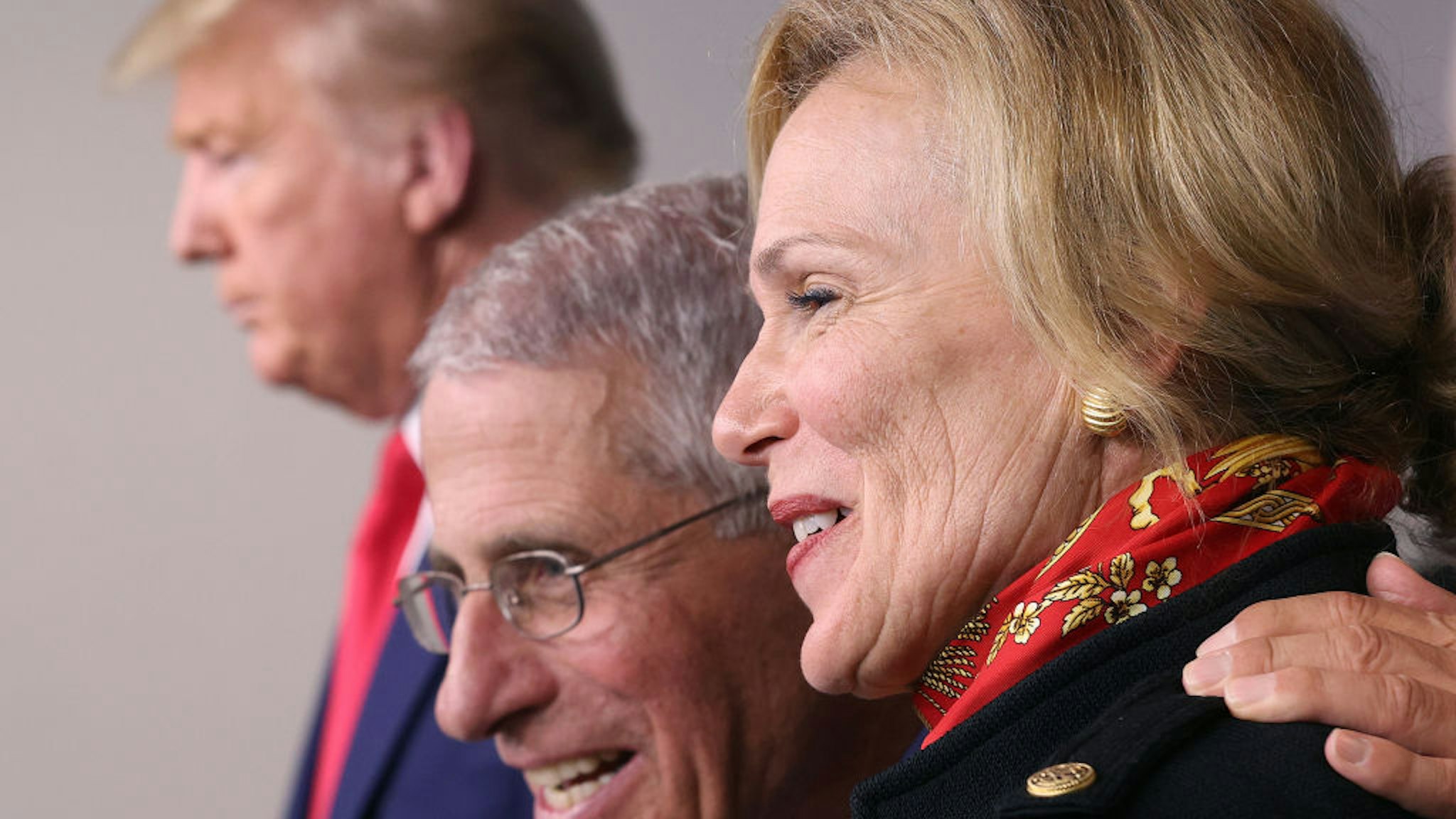For the second time in four days, a coronavirus projection model heavily relied upon by the White House task force has been updated, again dropping the number of projected deaths and hospitalizations.
The Institute of Health Metrics and Evaluation (IHME) at the University of Washington dropped its estimated death projection on Sunday for the first wave of the pandemic to 81,766 deaths, down from 93,531.
By Wednesday, the projection dropped the estimated total deaths to 60,415, revised down from 81,766 deaths, which was revised from down 93,531, a revised number itself.
Moreover, the projected total hospital bed shortage decreased from 34,654 to 15,852 (a revised number from April 5), and the so-called “peak” of hospital usage was pushed up from April 15 to April 11. The peak daily death toll was also moved up to April 12, from the revised April 16 date.
Overall US:
-# of total deaths projected decreased from 81,766 to 60,414
-Projected total bed shortage decreased from 34,654 to 15,852
-Peak hospital usage went from 4/15 to 4/11, peak daily death toll went from 4/16 to 4/12
-Under 200 deaths a day moved from 5/18 to 5/16— Alicia Smith (@Alicia_Smith19) April 8, 2020
The changing estimates have always been based off the implementation of “full social distancing through May 2020″ and do not factor in another wave of the virus post-August 1.
At an impromptu press briefing on Sunday, President Donald Trump told the nation that we are using fewer beds than the relied upon models have projected, specifically highlighting hard-hit New York.
“It’s turning out that we need less hospital beds,” Trump said. “We may have models, but we’ve been sort of saying that. In New York, we were saying we think you’re gonna need less.”
Based on the IHME model, Drs. Deborah Birx and Anthony Fauci, leaders in the White House coronavirus response task force, earlier this month estimated between 100,000-240,000 deaths related to COVID-19, The Washington Post reported.
As previously noted by The Daily Wire, “Dr. Birx has specifically highlighted a model from Imperial College London as a guide for nationwide policy on fighting the novel coronavirus. The model initially estimated up to a stunning 2.2 million COVID-19 associated deaths in the United States with no mitigation. Neil Ferguson, the epidemiologist behind the Imperial model, predicted a whopping 500,000 COVID-19 associated fatalities in the U.K. without mitigation, but now estimates far fewer than 20,000 deaths, citing the nation’s lockdowns.”
According to the site hosting the IHME model, the projections are based off of data “from local and national governments, hospital networks like the University of Washington, the American Hospital Association, the World Health Organization, and a range of other sources. The model is updated regularly as new data are available, in order to provide the most up-to-date planning tool possible.”
With regard to the modeling cutting off at August, the site notes that this does not mean the end of the pandemic, but the end of the projected “first wave”:
“Our model says that social distancing will likely lead to the end of the first wave of the epidemic by early June. The question of whether there will be a second wave of the epidemic will depend on what we do to avoid reintroducing COVID-19 into the population. By end the of the first wave of the epidemic, an estimated 97% of the population of the United States will still be susceptible to the disease, so avoiding reintroduction of COVID-19 through mass screening, contact tracing, and quarantine will be essential to avoid a second wave.”

